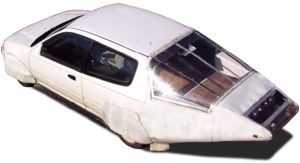


|

|
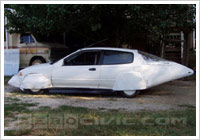
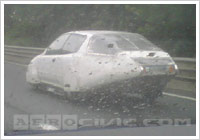
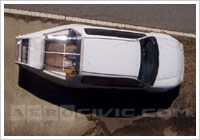
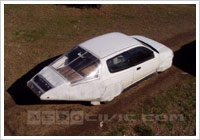
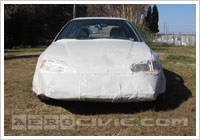
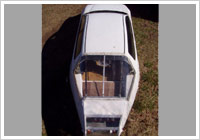
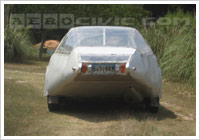
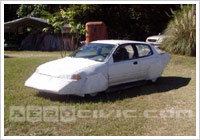
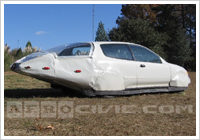
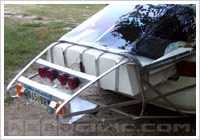
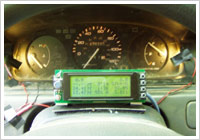
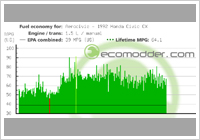
|
Modifying a Honda Civic for maximum MPGI started this fuel economy project after the Hurricane Katrina-inspired gas price run up, as I have a long commute and, except for a few hybrids, the car companies were busy introducing models with ever poorer gas mileage.Overview:
Update: October, 2011 - $5288 in savingsAs of October 2011, my improved mileage has saved me $5288 in gasoline over what it would have cost me to travel the 184,955 miles at my original mileage (pre-modified). This is over a 6 year period. Not a bad return for a $400 investment in aeromods. Background - the car & aero influencesMy car is a 1992 Honda Civic CX which I bought new, has an EPA fuel consumption rating of 47 mpg (US) highway / 39 city (5.0/6.0 L/100 km ... 20.0/16.6 km/L ... 56.4/46.8 mpg (Imp.)), and averaged mid 40's when driven "normally". Before Katrina, I had been using hypermiling techniques to get me up to an average in the high 50's, but I had to keep the speed below 55 mph (89 km/h) to achieve it, which can be inconvenient to do on busy highways. About this time I had read Phil Knox's article "Free Fuel Riding on the Wind" in EV World where he talked about using commonplace materials from the local hardware store to lower his truck's drag coefficient (Cd) and improve its gas mileage at highway speeds. Also, having lived in Germany, I was familiar with many of the ultra-low Cd cars designed in Germany during the 1930's. Since it didn't look like the car companies were planning to do anything in the foreseeable future about introducing a small car that would get good fuel economy on the highway, I decided to see what I could do towards improving my existing car's gas mileage. Research & construction
Initially I built the aero mods in aluminum bar, Coroplast, and clear vinyl and then as they proved themselves, rebuilt them in the stronger and more permanent aluminum monocoque and Lexan, using construction techniques common on homebuilt aircraft. Since I was building this car for use as a commuter, not a show car, or as a "no holds barred" extreme high mileage vehicle, everything I did to the car had to pay for itself in fuel savings within two year's time. Since it was a 15 year old car with over 350,000 miles (563,270 km) on the odometer at the time that I started this project, I had no concerns with resale values. The end result is a car with such low aerodynamic drag that it is down in concept car territory and well below the 0.25 Cd (coefficient of drag) of a Toyota Prius (3rd generation). Coastdown testing to calculate CdThe results of coast down testing are linear out to 90 mph / 145 km/h (it coasts almost as well at 80 mph / 129 km/h as it does at 50 mph / 80 km/h) and the Cd tested out to be 0.17.Update (Feb 2010): lean burn engine installed for more MPGIn the late summer of 2009 at 512,000 miles my engine and transmission were wearing out, so I had a lightly used transmission and lean burn (VX) engine installed in my car. So far, the new engine is averaging 7 mpg better than the old engine. This engine doesn't get the same mileage over a broad speed range that I saw with the previous engine, but instead shows the steady decrease of mileage with increasing highway speed typical of most cars. In the summer on a level road the new engine gets 100 mpg at a steady 60 mph and 120 mpg at 40 mph. It has tank averages in the upper 60's in the winter and upper 70's in the summer. I have had it remain in lean burn on a level highway up through 91 mph and estimate that it should be able to remain in lean burn up to speeds slightly above 100 mph. What fuel economy does it get?The approximate mileage on a level road burning non-ethanol gasoline at 85 degrees F ambient (29.4 degrees C) is:
Using E10 (10% ethanol/gasoline blend) drops these numbers by about 5 mpg. It was averaging mileage in the low 70's until E10 was introduced and is now averaging high 60's (see current fuel economy log). The flip side of the improved mileage is the increased range and I have no problems getting over 800 miles (1,287 km) from my 11 US gallon (41.6 liters / 9.2 Imperial gallon) tank in the summer.
What's it like to drive?I have to get above 90 mph before I start to feel any wind load and it has a calculated top speed of about 140 mph with its 102 hp engine (the OEM max speed was 95 mph). The wind load I now have at 80 mph is close to what I used to have at 60 mph. Wind noise is practically non-existent. It's a joy to drive on the highway since it doesn't feel any wind load at normal highway speeds and loses speed MUCH more gradually than a normal car when coasting. Compared to a "normal" car...This car coasts so well that when I switch from driving this car to a "normal" car, it feels as if I am driving on a road covered with molasses, and that, like a powerboat, you have to keep pouring on the power to maintain headway. By contrast, with this car on a level road it only takes a light touch on the accelerator to maintain speed and it takes only the slightests of downhills to maintain speed in a coast. Even a Prius now feels "draggy" at highway speeds compared to this car. Needless to say, the car gets plenty of strange looks out on the highway and one of my biggest problem while driving out on the highway are the rubberneckers cueing up to stare and take pictures. Aero observations: bugs, leaves & deerA fringe benefit of the aeromods are that the bugs in the summer and salt spray in the winter pass over my car without impacting. So I don't have to clean dried bugs or road salt from my windshield and rarely need to wash the car to remove the dirt and salt that accumulate on the surfaces of most cars. When driving through snow, the snow flakes ahead of the car smoothly lift, pass over the top of the car, and continue their fall undisturbed, with no zone of turbulence such as you see behind "normal" cars. The air also moves smoothly under the car so leaves and other debris on the road move only slightly as I pass over them. Another fringe benefit is protection from damage when encountering deer on the road, the low sloped front of the car scoops them up and over, with minimal damage to both deer and car. It has happened to the Aerocivic. Sound implausible? Watch this video of a deer colliding with the low sloped front end of a race car. The aero modifications in detailBoat tail
Expanded storage
Wheel/fender skirts
Rounded nose
Undertray
"Catamaran" style flow management around wheels
Side mirrors
CostSo now, for a total materials cost of $400, I've created a car that blows away the highway mileage of any car currently in production. I wish I could buy a car with as low drag is this one, and even though the car companies are starting to come out with higher mileage models, they still have a ways to go match the low drag and highway mileage of mine. Aerocivic media coverage & links
Other vehicles aeromodded for better MPG:Contact: Mike Turner ... mkturner7 [@] aol d-o-t comSite made by MetroMPG.com and Mitsubishi Mirage forum and owners club - Stats |